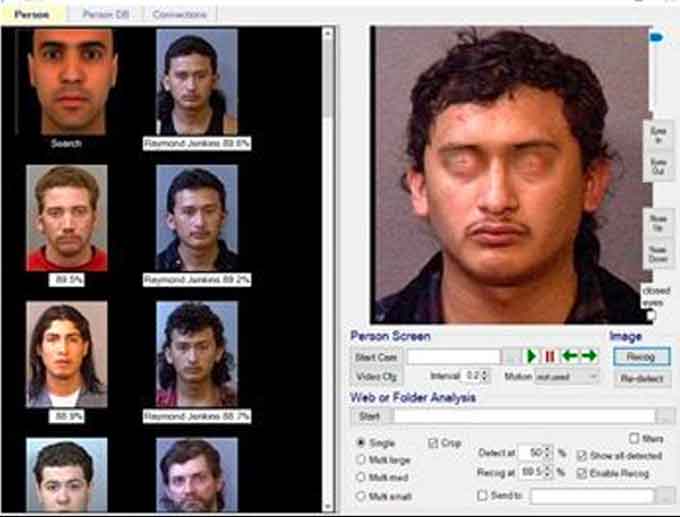
Face Forensics, a developer of the Artificial Intelligence (AI)-based face recognition technology, has added a significant new module to the company’s highly advanced face recognition system that is designed to work with the embedded or linked face images in existing databases, be it SQL Server, Oracle, or DB2.
The new module called Corpse-ID, has the ability to identify the faces of dead bodies,( i.e. bodies with eyes closed, as well as where the face has suffered significant damage.)
(Face Forensics’ Corpse-ID has the unique ability to identify individuals where the eyes are closed, as is the case with dead bodies. Courtesy of Iain Drummond and YouTube. Posted on Feb 22, 2019.)
Closed eyes have presented a significant challenge for traditional face recognition systems, as they typically place high value on clear edges and high contrast of features surrounding the eyes.
In images where the subjects eyes are not visible as anchor points for analysis, the recognition performance can be severely degraded or completely unsuccessful for matching.
The original design of f2 included the unique ability to match a selected ‘part of a face,’ and to apply different weightings to different areas, making it possible to match only the selected part (partial face).
The Corpse-ID module builds on Face Forensics’ unique ‘partial face’ recognition capabilities which enable an investigator to estimate the eye center locations optimally, enabling an image of an undamaged part of a face, (for example a single side of a face, or the eyes alone), to be matched against the same area on previously enrolled full face capture images.
In partial mode Corpse-ID can work with two eyes (i.e. mailbox or balaclava view), one eye, and sometimes with no eyes at all.
In Example A (at Top) the closed-eye face to be searched is copied into the box on the right, the eye centers are set manually, and the top matches are displayed as thumbnail images on the left.

As with all biometrics, face recognition systems require a database of images to match against.
In the case of corpses this database will generally be specially created following a particular disaster such as a boat sinking, tsunami, earthquake, etc, with pictures provided by concerned family members and friends.
Multiple photos of an individual can be held in the database.
When a victim is found an investigator will take several photos of their face. If the eyes are both visible and open the face can be matched immediately against the database.
If the eyes are closed or the face is damaged it will be positioned over a generic facial template and the eye locations will be set manually.
Each of the shots will be encoded and matched against the encodings of all the faces in the database. Thumbnail images of matches above a user-defined threshold will be displayed for investigators to compare.
Text filters, e.g. on gender, can be used to narrow down the number of potential matches where appropriate, for example where a face is heavily damaged and a number of distinguishing features are not visible.
Corpse-ID includes a magnification capability which enable a potentially matching face to be displayed and enlarged side-by-side with the victim’s image to enable a detailed examination.
All such matches can be saved for subsequent investigation.
Another unique capability within the Face Forensics’ Full Face (f2) Image Recognition Suite, is tattoo recognition, (which includes partial images of tattoos).
(This video is a demonstration of what Face Forensics believes is the world’s first generally available tattoo recognition software. Courtesy of Iain Drummond and YouTube. Posted on Oct 23, 2015.)
















